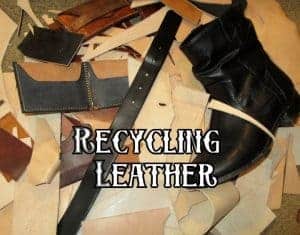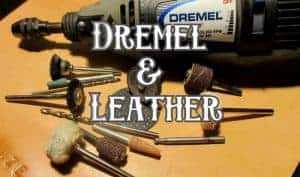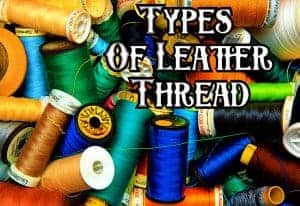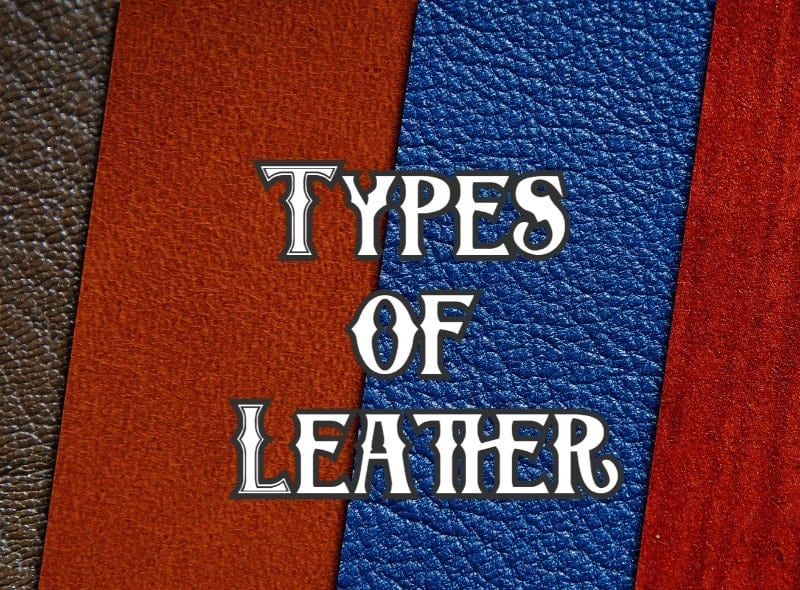
Different Types of Leather
When beginning leather crafting it can become very confusing on what leather to purchase as there are many different kinds. Each type of leather works for specific reasons and types of projects you are trying to accomplish.
We’ll go over all the types of leathers you might come across in your search for your next project. This guide will help you better understand why you want to buy or avoid certain types of leather depending on your craft.
I also recently wrote a Leathercraft Buyer’s guide that goes over a lot of issues when buying leather (especially online)
Types of Leather
When leather is being processed it goes through a cutting assembly where the hide will be cut into two pieces, known as splitting. The splitting process will result in the top cut, known as top grain and the bottom cut known to be the split.
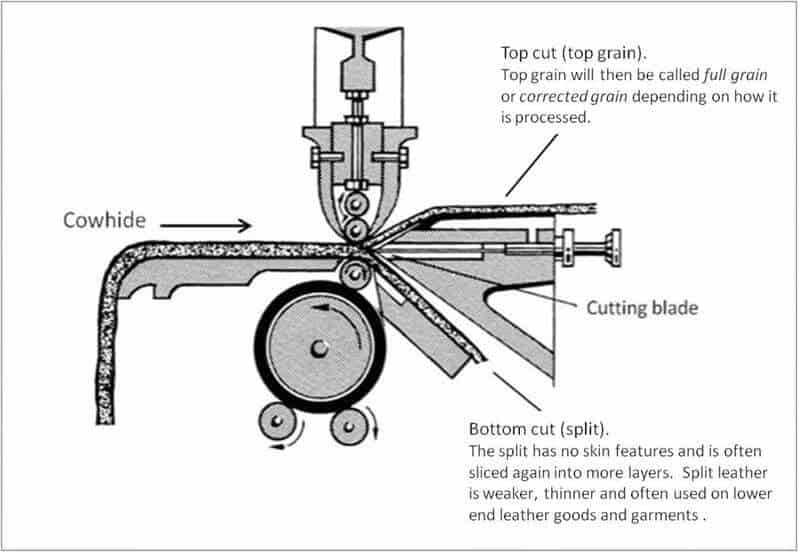
With most of your projects you will want to focus on getting the top grain side of the hide. This will ensure you can cut, shape, carve and stamp the leather with ease and will show pretty easily. The bottom grain will be less dense and more flimsy, this will be harder to cut and shape and near impossible to shape.
Even though the bottom grain sounds useless it still has some plus sides to add to your next project. So let’s break down some leather to look for.
- Full Grain Leather – Top cut of the hide that has not been prepped besides the removal of the hair. This is a highly desired leather because it will show the natural blemishes that the animal has had throughout its life. When dyeing this leather, the scratches will stand out on the leather and it will give the leather a natural look. Since this leather is not worked on to remove the scars it will be very durable as the strength hasn’t been reduced. Also this will allow the leather to be very breathable causing it to create a very nice patina throughout usage.
- Top Grain Corrected Leather – This is the top cut that has been smoothed out to create a uniform look throughout the leather. This is done by sanding and buffing any natural blemishes on the hide such as scars, stretching and scratches. Then a natural grain or a pebble style grain will be embossed on the top layer to have a constant look throughout the leather. Less Breathable due to the grain embossed, will result in a not as good patina.
- Veg-Tanned Leather- This leather has been tanned with vegetable oils and/or other plant based oils. Very easy to stamp, cut and carve this leather as the tanning will result in a very durable top layer of your leather. It is also more environmentally friendly then some other methods of tanning leather
These combined are some of the most sought after leathers for crafting projects. When searching, it will state Veg-Tanned Leather which is usually a top grain or full grain and should say in the description.
- Latigo Leather– Is more flexible than veg-tanned leather and is very hard to shape and stamp, if even possible. This leather has a combination of veg-tanning and chrome tanning which will give it a more finished look. Due to the combination, the leather tends to be very water resistant and is stiff until aged. It’s durability allows it to be used for saddle straps, leashes and dog collars.
- Bridle Leather- Is a very expensive leather as it is tanned with oils and usually pre-dyed with rich bold colors. Used in very high end products.
- Cordovan Leather- Is made from horses and is very durable and also expensive. This leather is in very high end leather products and will greatly increase the price of the item.
- Suede- Made from the bottom cut (split) of the hide that is much more flexible and furry. Cannot be stamped, carved or molded and cannot get wet. Suede was originally made for shoes but has also taken on the furniture industry and used for linens. This can be used for extra protection inside your leather craft such as making a leather camera bag, using this for the inside will create some added protection.
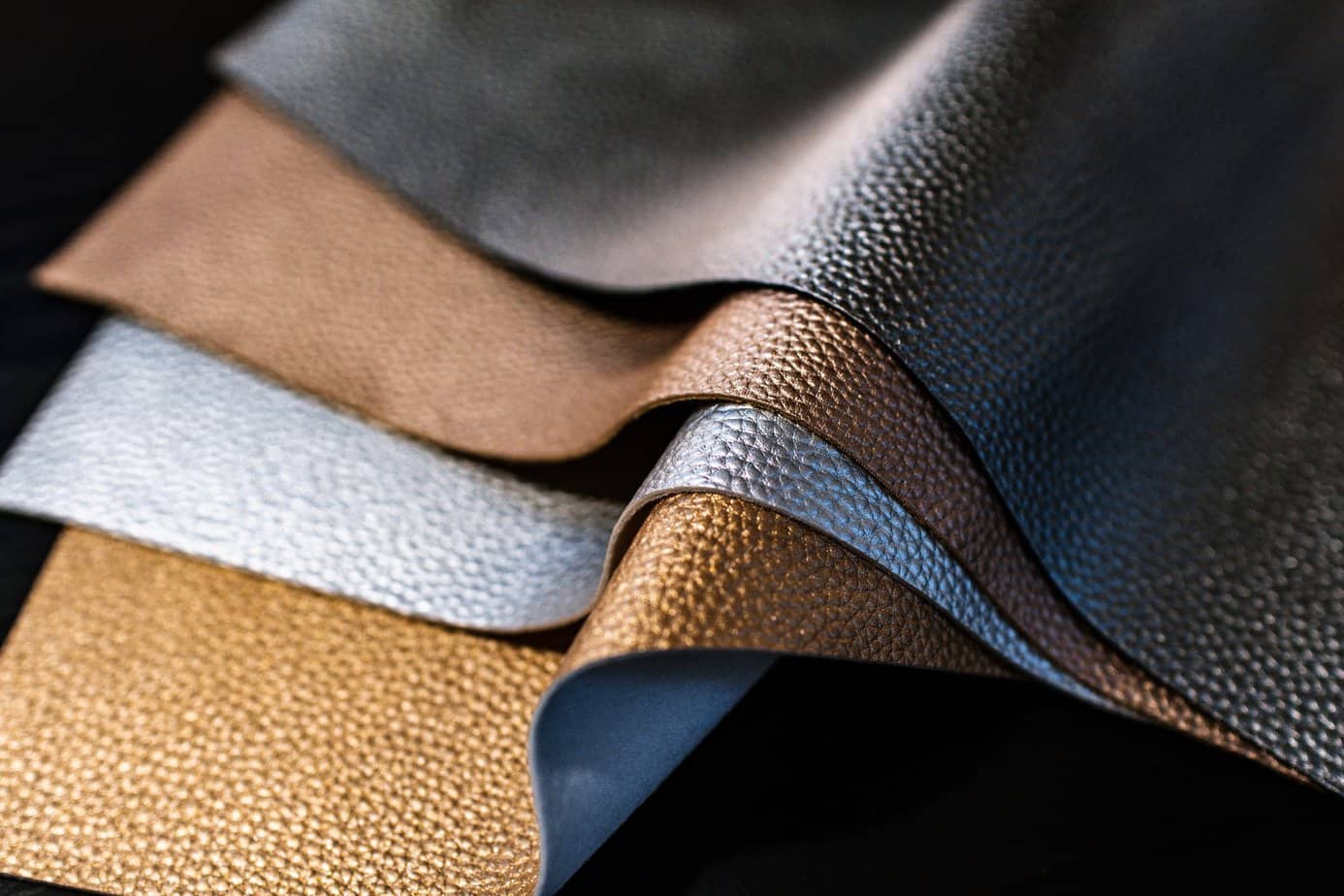
Fake or Cheap Leathers
Some fake leathers can be very hard to tell the difference between. So if you are unsure, check out our nine ways to test if leather is real or fake.
- Upholstery Leather- Cannot be tooled and is mainly used for car seats, sofas, chairs and sometimes clothing.
- Faux, Vegan, Pleather Leather– Are all fake leathers that tend to not last very long and is fairly cheap. This is 100% synthetic leather made from pvc and polyurethane.
- PU or Bicast Leather- Is the lowest part of the split causing it to be loosely packed and very flexible. PU plastic will be added to the top layer to make it look like real leather.
- Genuine Leather- Although this sounds good on products, it isn’t a leather you really want to buy or use anymore. It is now similar to PU Leather as it is the bottom of the split and then coated with chemicals to produce a grain look. This leather is not as strong and is usually backed with cloth, paper or plastic to hold shape.
- Bonded Leather- Left over from big warehouses that have collected their off-cuts. Once collected it will be shredded up to a powder and then mixed with a paste and pressed into a sheet. This can contain anywhere between 10%-90% of real leather and is very popular for furniture due to it’s low cost.
- Cabretta Leather- Is soft leather produced from specific breads of sheep that grow hair instead of wool. This leather is stronger than most sheep skins and will be used for shoes and gloves.
- Calfskin Leather– Is very soft, high quality and has a very dense grain. This will have almost no marks on it and will be usually veg-tanned that will be very breathable due to no processing needed.
- Chrome Tanned– This is a tanning method for leathers using chromium salt and small amount of tanning agents. Most of the time will have very strong unhealthy fumes from this process.
- Deerskin Leather- Is a unique hide that is soft, breathable, lightweight yet very durable. This is a high value leather due to its features and tear resistance, used with gloves and luxury.
- Jupa Leather- Is a highly processed hide know to have non-slip attributes. Used with saddles, seat covers and knee padding.
- Protected Aniline- Known as Aniline Plus, this leather is a variation of aniline with a light coating of micro pigments for a uniform color. Holds its look over time as it protects against stains, soiling and fading.
- Split Leather –This is the bottom part from cutting the hide. This is used to make suede and other fake leathers that have been coated on top. If it is very thick it can be split again into the middle split, which would be denser than the flesh split.
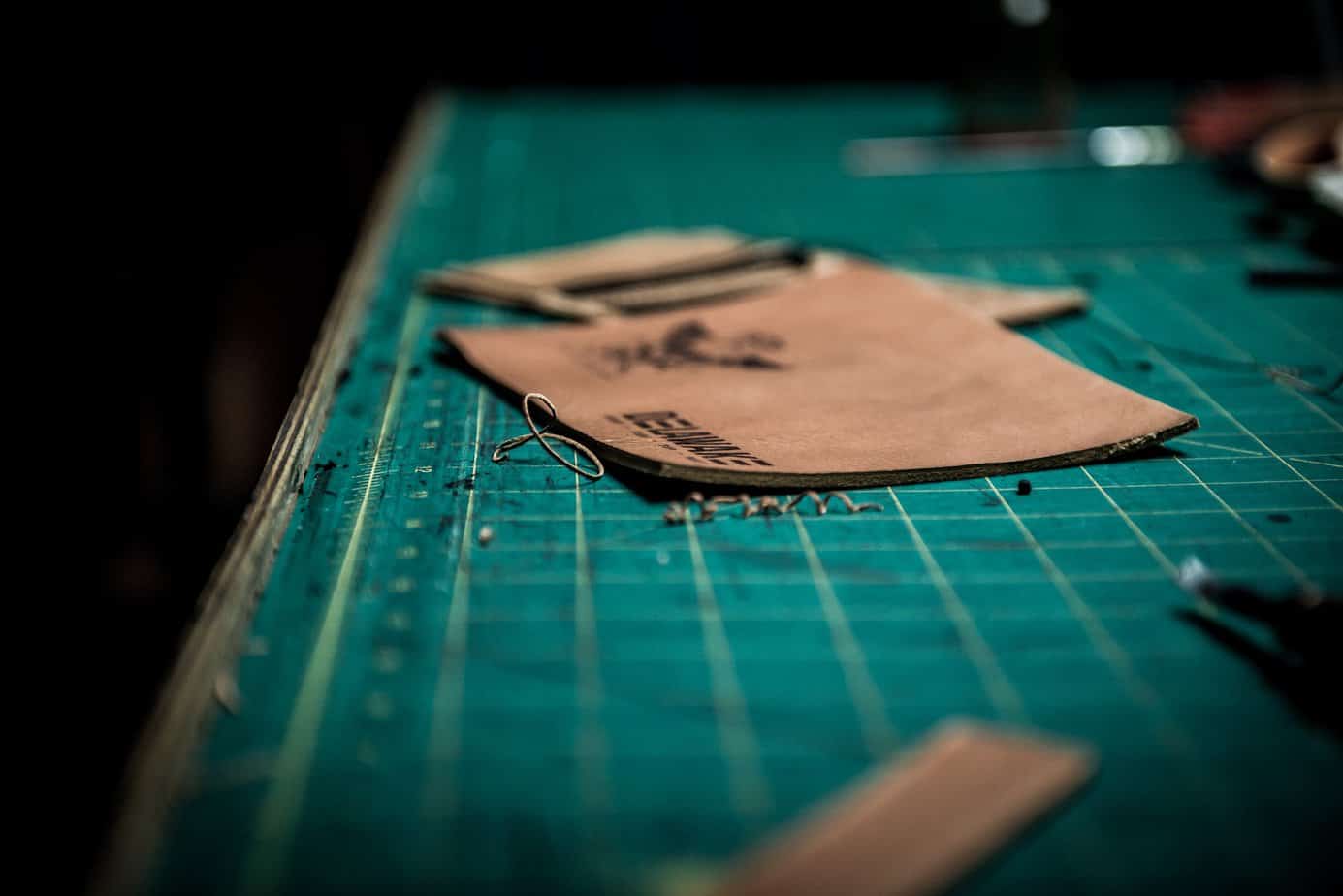
Leathers can be tanned differently which will change the price of leathers. This is the same with who and where the tanning process has occurred. To find out more about the different tanning processes check out our guide on how leather is tanned.

